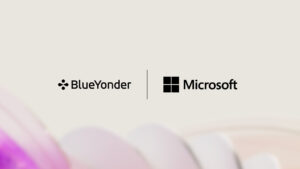
Engage your patients before, during, and after care
In the past, patient engagement primarily occurred during care. But now we’re seeing health organizations around the world wanting to engage people along their entire wellness journey—not just when they need treatment, but before and after as well.
At the HIMSS annual conference and exhibition in Orlando, Florida, this February, you’ll get to see examples of how health organizations are innovating with today’s technologies to do so.
For example, you’ll be able to check out Dartmouth-Hitchcock Health System’s ImagineCare.
The folks at Dartmouth-Hitchcock asked a fundamental question: How can we shift from a reactive system where people only see health professionals when they’re sick to a proactive system where everyone’s working together to keep people healthy—and out of doctor’s offices and hospitals?
Their answer? Ever-present healthcare. Nurses and health coaches can track and respond to an individual’s health status in real time using the cloud-based ImagineCare. It harnesses advanced analytics, the Internet of Things, and CRM technologies to enable personalized, proactive patient engagement.
For instance, when a device reading or some other element of a person’s data exceeds a custom-prescribed threshold, an alert is sent to a nurse, who then reaches out to the individual via phone call, video chat, or secure text.
When it comes to engaging patients and improving their experience during care, you’ll want to check out what Oneview Healthcare is doing.
With the Oneview Patient Engagement and Clinical Workflow Solution, health organizations can provide patients with a tablet at their bedside that they can use for all kinds of cool stuff—and the tablet screen can be beamed to a TV in the hospital room. Patients can use entertainment apps to watch their favorite TV shows. They can access their doctor’s instructions and multimedia educational content about their condition, and even order food from dietary options that have been designed specifically for them to help their recovery. Plus, from the same tablet, clinicians can access mission-critical hospital tools like electronic health records, MRIs, X-Rays, and real-time location systems.
At HIMSS17, you can also learn how Children’s Mercy hospital has improved post-discharge engagement to not only save lives, but millions of dollars using simple, inexpensive technology.
As nurse Lori Erickson writes in her blog, since they started using their home-monitoring app in March of 2014, none of the babies with single ventricle (SV) heart disease in their Cardiac High Acuity Monitoring Program (CHAMP) has died at home during the high-risk period between their first and second surgeries. That’s significant because typically as many as 20 percent of SV infants don’t survive this timeframe known as interstage, which is the first four to six months of their life.
The home monitoring app has also helped Children’s Mercy to massively reduce the cost of care – so much so that many of the other pediatric cardiology centers in the US are clamoring to get the solution – and Children’s Mercy is working on helping them.
The team at Children’s Mercy will be quick to point out that in order to realize the benefits of their home monitoring app, they also needed to make clinical process changes. In other words, technology can empower you to do things in new ways but you need to follow through on doing things in those new ways.
These are just a few of the clever and innovative solutions people in healthcare are coming up with to engage patients and their families. What’s your story? How are you and your organization using technology to engage people in being healthier? Let us know via email, Facebook, or Twitter.




